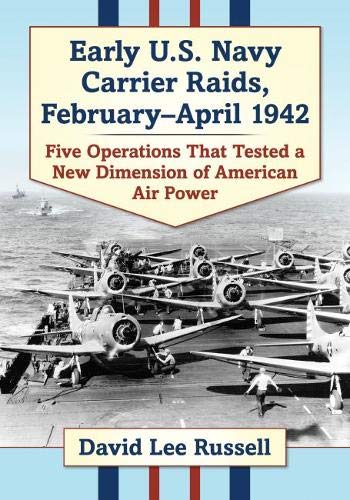
After the Japanese attack on Pearl Harbor, America’s fast carrier task forces, with their
aircraft squadrons and powerful support warships, went on the offensive. Under orders from
the Fleet Admiral Ernest J. King, the newly appointed Admiral Chester W. Nimitz, as the
Commander-in-Chief of the Pacific Fleet, took the fight to the Japanese, using island raids
to slow their advance in the Pacific.
Beginning in February 1942, a series of task force raids led by the carriers USS
Enterprise, USS Yorktown, USS Lexington and USS Hornet were launched, beginning in
the Marshall Islands and Gilbert Islands. An attempted raid on Rabaul was followed by
successful attacks on Wake Island and Marcus Island. The Lae-Salamaua Raid countered
Japanese invasions on New Guinea. The most dramatic was the unorthodox Tokyo
(Doolittle) Raid, where 16 carrier-launched B-25 medium bombers demonstrated that the
Japanese mainland was open to U.S. air attacks.
The raids had a limited effect on halting the Japanese advance but kept the enemy away
from Hawaii, the U.S. West coast and the Panama Canal, and kept open lines of
communications to Australia.
